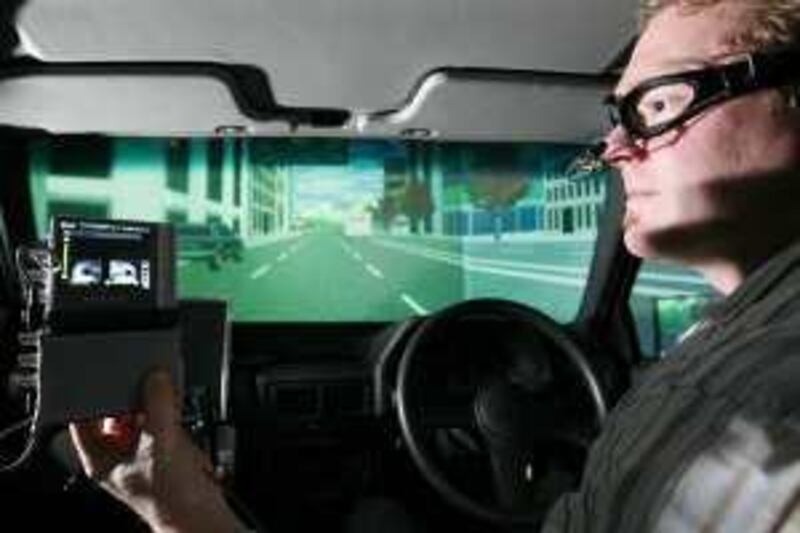SYDNEY // In a world first, drug users in Australia are being tested to see how methamphetamine, a highly addictive psycho-stimulant, can affect their ability to drive. More than half a million Australians are thought to use the synthetic narcotic, commonly known as "ice" or "crystal meth". The drug induces a sustained feeling of euphoria and alertness, which can often give way to violence and paranoia and acute psychiatric problems in the longer term. Scientific literature indicates that methamphetamines are a major factor in road accidents and hazardous driving behaviour, although until now the research has not analysed those who regularly smoke or inject methamphetamines, only volunteers who have been administered controlled doses of the illicit substance. "It is a unique study in the sense that nobody had ever tested the driving ability of actual users. Other studies have given very small amounts of methamphetamine to otherwise healthy participants," said David Bosanquet from the University of Sydney. His experiment aims to establish a causal link between methamphetamine consumption and erratic driving at a time when Australian authorities are increasing random drug checks for motorists. At the University of Sydney campus, at the end of a long corridor, a plain white door opens into a dark, windowless laboratory. On one side sits a small, red Japanese car that is part of a simulator connected to three large monitors. The aim is to create an authentic driving experience with participants wearing special glasses that are wired to computers that record reaction times and eye movement as they negotiate their way through a video-arcade style programme with sophisticated graphics and sound. "We have put a few police cars in there too to see if the meth-using group will be more aware of them ... whether they look more frequently at the police trailing them," Mr Bosanquet said. The results will be compared with those of drug-free contributors as researchers attempt to gauge the level of impulsiveness, fatigue and antisocial behaviour shown by impaired drivers who are habitual methamphetamine users. Gordian Fulde, a professor of emergency medicine at St Vincent's Hospital in Sydney, has seen with depressing regularity the carnage that drug-fuelled motorists can inflict. "If someone is on a stimulant and they drive, they are a killing machine," he said. "They drive too fast and feel like Superman. They believe they are indestructible and have X-ray vision and they just don't." Crystal meth, the most dangerous type of methamphetamine, arrived in Australia several years ago and is relatively inexpensive and easy to obtain. Doctors have warned that users are at risk of serious harm. "They are destroying their brains," Dr Fulde said. "You can measure within months ... biochemical changes and then, eventually, structural changes. Then you have psychiatric changes. If you take it long enough, the majority of people will end up with mental health problems." The substance is popular with a range of people. "The initial rush would last for between 30 minutes and an hour, depending on the quality," said Joe, 33, a former soldier and a reformed meth addict. "The coming down is pretty hard after you've developed a habit. People become hooked on the stuff very easily. "It leads to mental exhaustion. Your mindset changes and you become rather dysfunctional, to say the least. It alters your brain function," he explained near a drop-in centre in the Kings Cross district of Sydney. At this moment a drug dealer, a dishevelled middle-aged woman, walked up offering to sell a "point" or street dose of methamphetamine for A$50 (Dh148). Joe was unimpressed: "If you knew what went into it, you wouldn't touch it; you wouldn't stick it up your arm, eat it or smoke it." At the Wayside Chapel in Kings Cross, which offers help to addicts, alcoholics and the homeless, Graham Long, the pastor, said the widespread use of methamphetamine in Australia had been grossly overstated by the authorities and that there were more important battles to fight. "It is not the epidemic that you read about," he asserted. "We tend to demonise those drugs that we [society in general] tend not to use. The amount of social heartache that meth causes us would be barely measurable compared to the amount of social heartache that alcohol or nicotine is causing us." pmercer@thenational.ae
Study to test drug-addicted drivers
Some Australians hooked on methamphetamine will take simulated motoring trips to determine how drug use affects their driving ability.

Editor's picks
More from the national




